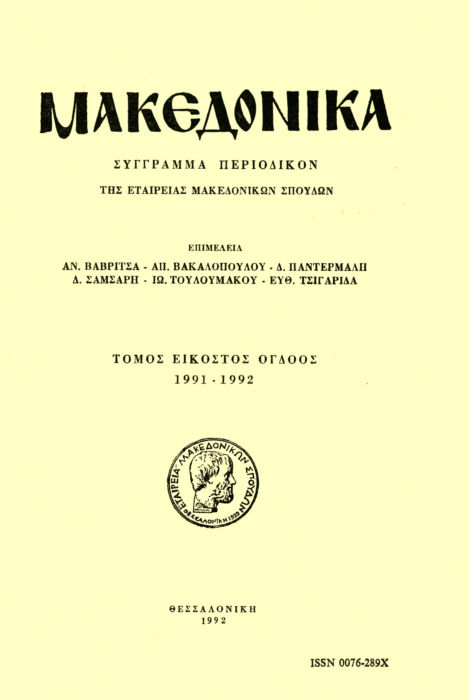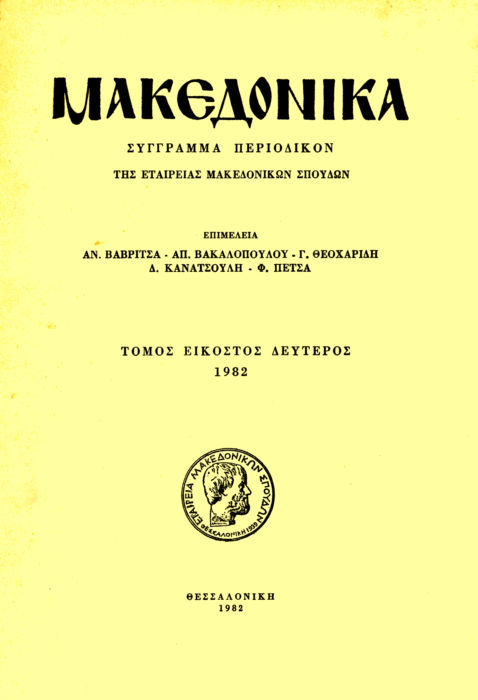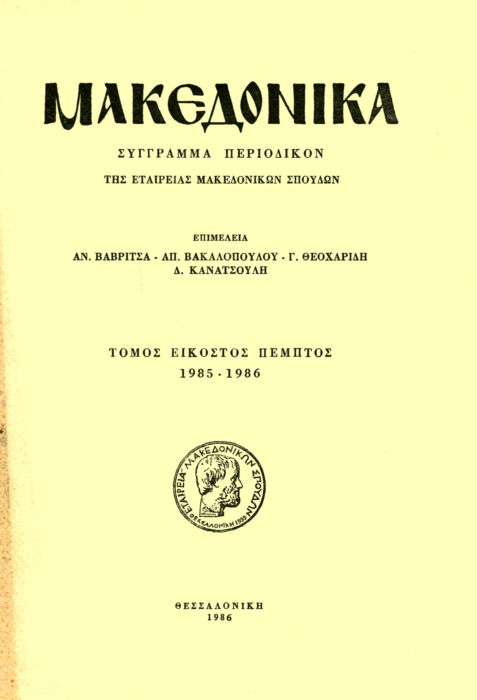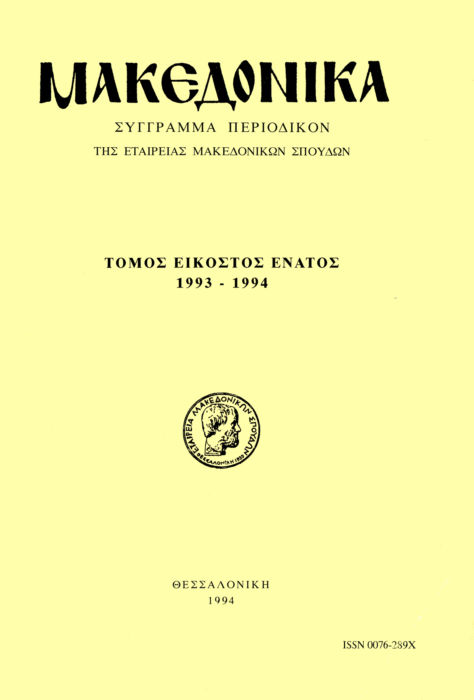Οι θαυματουργές εικόνες της Μονής Ζωγράφου [E.N. TSIGARIDAS – A. TRIFONOVA, The Miracle Icons of the Zograf Monastery]
Περίληψη
In this paper we focus on six icons from the Zograf Monastery of MountAthos, which, according to the tradition, are considered miraculous. We willdiscuss three icons of St. George, the icon of St. George Acheiropoiitos, theicon of St. George from Arabia and the icon of St. George from Moldavia, andthree icons of the Virgin, the icon of the Virgin Epakoousa, the icon of theVirgin Proagellomeni and the icon of the Virgin Esfagmeni.The icon of St. George Acheiropoiitos or Zograf, as it is also known, isbelieved to be «·¯ÂÈÚÔÔ›ËÙÔ˜» (made not by a human hand), because,according to the tradition, St. George miraculously depicted himself. In ouropinion, the icon of St. George Acheiropoiitos is considered one of the finesticons of the Paleologian period of the end of 13th century. At a later date asilver revetment was added on the icon, dating from 1837.The icon of St. George from Arabia is considered to be miraculousbecause, according to the tradition, the icon came from Arabia to Mount Athosby miracle and afterwards to the Zograf Monastery. The icon dates from theend of 12th century – beginning of 13th century and the silver revetment datesfrom 1822.The icon of St. George from Moldavia, according to the tradition, is adonation from the ruler Stefan from Moldovlahia. By a miraculous way theSaint appeared in the vision of the ruler and advised him to send the icon tothe Zograf Monastery. It bears a silver revetment from 1838. The icon is repainted, thus giving the impression of a work of early 19th century.The icon of the Virgin Proagellomeni or Akathist is considered to bemiraculous because, by a miraculous way, the icon called upon an old monk towarn the monks of the Zograf Monastery against the coming of the Latinenemies, who wanted to impose the ounia. In our opinion, the icon dates to the16th century and is part of the works of the Cretan School in this period. Theicon bears a silver revetment of 1896.The icon – fresco of the Virgin Epakoousa is considered to be miraculous,because, according to the tradition, it instructed Ossios Kosmas Zografitis in amiraculous way, how to manage to see God. The icon dates to the 19th centuryand bears a silver revetment of 1896.
Finally, the icon of the Virgin Esfagmeni, which is also consideredmiraculous, has in the face a trauma from the knife of a Turk, who, after thedesecration of the icon of the Virgin, died. According to the technical andtechnotropical characteristics, the icon dates to the second half of the 18th century.
Λεπτομέρειες άρθρου
- Πώς να δημιουργήσετε Αναφορές
-
Τσιγαρίδας Ε. Ν., & Trifonova, A. (2011). Οι θαυματουργές εικόνες της Μονής Ζωγράφου [E.N. TSIGARIDAS – A. TRIFONOVA, The Miracle Icons of the Zograf Monastery]. Μακεδονικά, 35, 119–139. https://doi.org/10.12681/makedonika.6
- Τεύχος
- Τόμ. 35
- Ενότητα
- Άρθρα

Αυτή η εργασία είναι αδειοδοτημένη υπό το CC Αναφορά Δημιουργού – Μη Εμπορική Χρήση – Παρόμοια Διανομή 4.0.
Authors who publish with this journal agree to the following terms:
- Authors retain copyright and grant the journal right of first publication with the work simultaneously licensed under a Creative Commons Attribution Non-Commercial License that allows others to share the work with an acknowledgement of the work's authorship and initial publication in this journal.
- Authors are able to enter into separate, additional contractual arrangements for the non-exclusive distribution of the journal's published version of the work (e.g. post it to an institutional repository or publish it in a book), with an acknowledgement of its initial publication in this journal.
- Authors are permitted and encouraged to post their work online (preferably in institutional repositories or on their website) prior to and during the submission process, as it can lead to productive exchanges, as well as earlier and greater citation of published work (See The Effect of Open Access).








